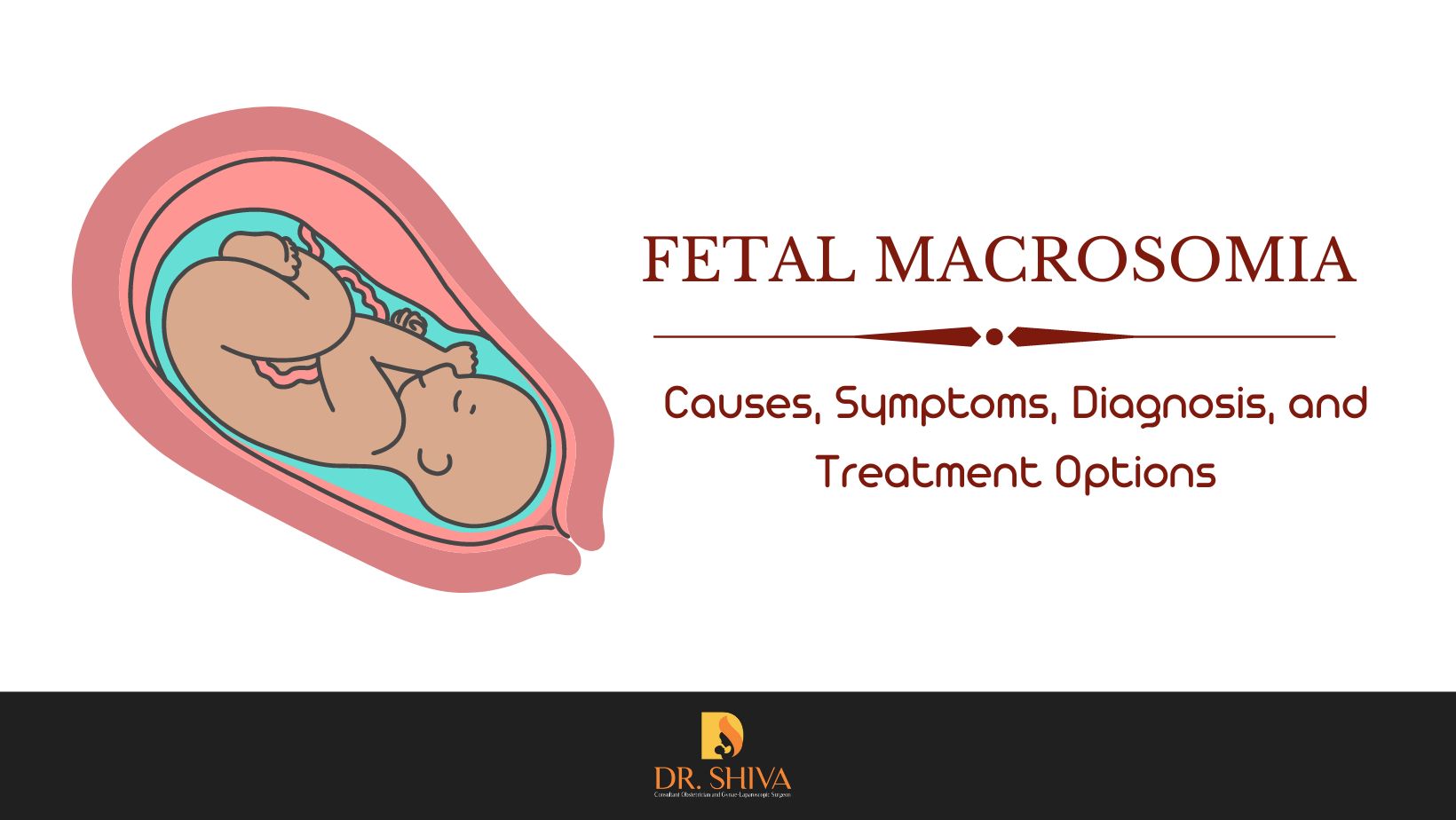
Fetal macrosomia refers to a baby who is larger than average for their gestational age. In general, a baby weighing more than 4kg (8 pounds) at birth is considered to have macrosomia. This can make vaginal delivery more difficult and put the baby at risk of injury during birth.
Causes
Fetal macrosomia can occur due to a variety of factors, including maternal factors such as maternal diabetes, maternal obesity, and excessive weight gain during pregnancy. Maternal diabetes is a leading cause of fetal macrosomia, as high blood glucose levels can cause the fetus to grow too quickly. Other factors that may contribute include genetics, male gender, and post-term pregnancy.
Symptoms
Fetal macrosomia may not have any noticeable symptoms during pregnancy. However, some of the symptoms include:
- Increased fundal height – the height from your pubic bone to the top of the uterus.
- Increased amniotic fluid levels – a large baby can produce more urine output as compared to a normal baby, this can cause an increase in amniotic fluid levels.
- Elevated maternal blood glucose levels
- Difficulty with fetal movements
- Difficulty with fetal heartbeat monitoring
Risk factors
Factors that increase the chances of having fetal macrosomia.
- pre-gestational diabetes – had diabetes in a previous pregnancy.
- gestational diabetes –having diabetes in the current pregnancy.
- maternal obesity
- fetal macrosomia in a previous pregnancy
- overdue pregnancy
- maternal age – if the mother ages more than 35 years the risks are higher.
Complications
It can occur to the mother and baby.
Maternal complications-
- The baby may get wedged in the labor canal due to its size. A c-section may be needed.
- Vaginal tear during childbirth
- Uterine rupture– if the mother previously had a c sec, fetal macrosomia can increase the risk of tear along the scar lines. This is a very rare but serious complication.
- Bleeding due to uterine atony – Fetal macrosomia can increase the risk of the uterus not contracting properly resulting in serious bleeding.
Complications to the baby
- Birth injuries: There can be an increase in risk of birth injuries, such as shoulder dystocia, which can cause nerve damage, fractures, and other complications.
- Obesity: Babies who are born with a high birth weight are more likely to become overweight or obese later in life
- Type 2 diabetes: Fetal macrosomia is associated with an increased risk of developing type 2 diabetes later in life. This may be due to the effect of high blood glucose levels during pregnancy, which can cause the baby’s pancreas to produce more insulin than normal.
- Metabolic syndrome – a group of conditions characterized by high blood pressure, high blood sugar, elevated cholesterol levels, and excessive fat deposits around the waist. Babies with fetal macrosomia may be at an increased risk of developing metabolic syndrome later in life.
- Cardiovascular disease: Fetal macrosomia may be associated with an increased risk of developing cardiovascular disease later in life, including hypertension, coronary artery disease, and stroke.
Diagnosis
Fetal macrosomia is typically diagnosed during prenatal care through ultrasound imaging. Ultrasound measurements can estimate fetal weight and can detect if the fetus is growing too quickly. Other diagnostic tests that may be performed include fetal echocardiography and fetal blood sampling.
In most cases, it occurs due to maternal obesity, diabetes, or excessive weight gain. But if these are not the factors causing it, then there could be a medical condition causing increased fetal growth which needs to be diagnosed.
Treatment Options
There are several treatment options available depending on the severity of the condition. These may include:
- Inducing labor before the due date: If the fetus is estimated to be larger than average, inducing labor before the due date may be recommended to reduce the risk of complications during delivery.
- Caesarean delivery: If the fetus is estimated to be significantly larger than average or if the mother has diabetes, caesarean delivery may be recommended to reduce the risk of complications during delivery.
- Blood glucose monitoring and control: For mothers with diabetes, controlling blood glucose levels during pregnancy can help prevent fetal macrosomia.
It’s important to note that not all babies born with fetal macrosomia will develop these long-term complications, and early diagnosis and appropriate management can help reduce the risk of these complications. It’s essential to discuss any concerns about fetal macrosomia with your healthcare provider to ensure the best possible outcomes for you and your baby.

Recent Comments